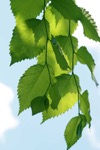Notice (8): Undefined index: geoplugin_countryCode [APP/Controller/AppController.php, line 94]Code Context$Country_code = '';if($ip_data && $ip_data['geoplugin_countryCode'] != null) {$Country_code = $ip_data['geoplugin_countryCode'];$client = null $forward = null $remote = '216.73.216.24' $ip = '216.73.216.24' $ch = unknown $ip_data_in = '{ "geoplugin_status":429, "geoplugin_message": "Blacklisted due to sending too many requests to geoplugin.net. Consider whitelisting your IP or domain", "geoplugin_url": "https://www.geoplugin.com/premium/" } ' $ip_data = [ 'geoplugin_status' => '429', 'geoplugin_message' => 'Blacklisted due to sending too many requests to geoplugin.net. Consider whitelisting your IP or domain', 'geoplugin_url' => 'https://www.geoplugin.com/premium/' ] $Country_code = ''App\Controller\AppController::initialize() - APP/Controller/AppController.php, line 94 App\Controller\ProductsController::initialize() - APP/Controller/ProductsController.php, line 31 Cake\Controller\Controller::__construct() - CORE/src/Controller/Controller.php, line 273 ReflectionClass::newInstance() - [internal], line ?? Cake\Http\ControllerFactory::create() - CORE/src/Http/ControllerFactory.php, line 47 Cake\Http\ActionDispatcher::dispatch() - CORE/src/Http/ActionDispatcher.php, line 91 Cake\Http\BaseApplication::__invoke() - CORE/src/Http/BaseApplication.php, line 235 Cake\Http\Runner::__invoke() - CORE/src/Http/Runner.php, line 65 Cake\Http\Runner::__invoke() - CORE/src/Http/Runner.php, line 65 Cake\Http\Middleware\CsrfProtectionMiddleware::__invoke() - CORE/src/Http/Middleware/CsrfProtectionMiddleware.php, line 104 Cake\Http\Runner::__invoke() - CORE/src/Http/Runner.php, line 65 Cake\Http\Runner::run() - CORE/src/Http/Runner.php, line 51 Cake\Routing\Middleware\RoutingMiddleware::__invoke() - CORE/src/Routing/Middleware/RoutingMiddleware.php, line 168 Cake\Http\Runner::__invoke() - CORE/src/Http/Runner.php, line 65 Cake\Routing\Middleware\AssetMiddleware::__invoke() - CORE/src/Routing/Middleware/AssetMiddleware.php, line 88 Cake\Http\Runner::__invoke() - CORE/src/Http/Runner.php, line 65 Cake\Error\Middleware\ErrorHandlerMiddleware::__invoke() - CORE/src/Error/Middleware/ErrorHandlerMiddleware.php, line 96
| Scientific: | Ulmus rubra |
|---|---|
| Other: | Slippery Elm |
| Family: | Ulmaceae |
The inner bark of the slippery elm tree contains mucilage that form a viscous or " slippery " liquid when added to water. Native Americans taught the early settlers to use this herb to treat numerous digestive complaints, wounds, and to eat a porridge made from the powdered bark when food was scarce.
Slippery elm’s demulcent action treats sore throats, heartburn, stomach ulcers, cough, and inflammation of the bowels. Public speakers and singers benefit from slippery elm lozenges to soothe strained vocal cords causing a " hoarse voice. " You can purchase commercially made slippery elm lozenges or create your own by mixing the powdered bark with honey. Mucilage contains soluble fiber that acts as a bulking agent to improve both chronic constipation and also to treat diarrhea. Early nineteenth-century physicians made a gruel made from the inner bark to feed sick infants and convalescing patients that were incapable of tolerating other food.
Externally slippery elm benefits wounds and infections. A poultice made from the inner bark drains pus from abscesses (boils, carbuncles). During the American revolution, field doctors applied slippery elm poultice to gunshot wounds.
Add 1-2 tsp of powder to a cup of cold or hot water for best results, or take capsules and lozenges with a glass of water. Avoid using expensive slippery elm tinctures because mucilage extraction does not require alcohol.
Note: Due to Dutch elm disease and over-harvesting, slippery elm bark became threatened species. Ensure your supplier of slippery elm obtains it responsibly.
Inner bark is high in mucilage and used to protect inflamed mucous membranes.
Gastrointestinal
• general inflammation of GI tract
• esophagitis
• gastroesophageal reflux disorder (GERD)
• gastritis
• laryngitis
• colitis
• gastric ulcers
• apthous ulcers
• irregular bowels
• constipation
• diarrhea
• anal fissures
Dermatologic (topical use)
• suppurative infections (poultice)
- abscess
- boils
• varicose veins
• bed sores
Misc
• nutritive deficiency
• convalescence (porridge )
• Demulcent
• Emollient
• Nutritive
• Astringent
• Vulnerary
• Antiinflammatory
• Hypoglycemic
• Mucilage
• Soluble Fiber
• Tannins
• Flavonoids
• Phenolic Acids
• Warm or cold infusion (powdered inner bark): 1-2 tsp/cup, 2-3 minutes
Note: tinctures are not recommended because alcohol extracts are less effective at extracting mucilage compared to infusions.
Generally considered safe when used as indicated.
Medications• Take medications away from soluble fiber because it can decrease their absorption and impair their effectiveness.
Barnes J, Anderson LA, Phillipson JD. Herbal Medicines, 3rd ed. London: Pharmaceutical Press, 2007.
Bone K. Principles and Practice of Phytotherapy. Edinburgh: Churchill Livingstone, 2000.
Bone K. A Clinical Guide to Blending Liquid Herbs: Herbal Formulations for the Individual Patient. St Louis, MO: Churchill Livingstone, 2003.
Brinker F. The Toxicology of Botanical Medicines, 3rd ed. Sandy, Oregon: Eclectic Medical Publications, 2000.
Felter HW, Lloyd JU. King's American Dispensatory. 1898. http://www.ibiblio.org/herbmed/eclectic/kings/main.html. Accessed: August 19, 2006.
Hoffman D. Medical Herbalism. Rochester, Vermont: Healing Arts Press, 2003.
Weiss RF. Herbal Medicine. Beaconsfield, England: Beaconsfield Publishers Ltd, 1988.
Williamson EM, ed. Major Herbs of Ayurveda. Edinburgh: Churchill Livingstone, 2002
Disclaimer: This content is subject to change. The information is intended to inform and educate; it does not replace the medical evaluation, advice, diagnosis or treatment by a healthcare professional. www.nhpassist.com © 2014 NDAssist Inc. and/or its affiliates. All rights reserved.

|
Slippery Elm
SummaryThe inner bark of the slippery elm tree contains mucilage that form a viscous or " slippery " liquid when added to water. Native Americans taught the early settlers to use this herb to treat numerous digestive complaints, wounds, and to eat a porridge made from the powdered bark when food was scarce. IndicationsSign in requiredActionsSign in requiredConstituentsSign in requiredPosologySign in requiredSafetySign in requiredInteractionsSign in requiredReferencesSign in required |
|---|